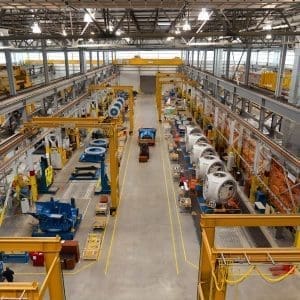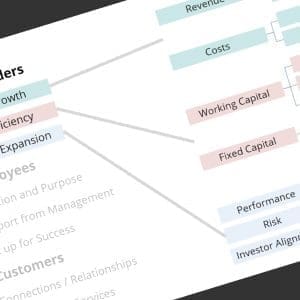Organizations are desperate for innovation, but these are still investment choices that require complete and credible data to enable the right decisions. Developing a simple standard for characterizing all costs will accelerate decision making.
Getting your Big Idea off the drawing board and into someone’s hands will always come down to the business case and the budget.
How much do you need to spend – and what am I going to get for it?
This can be a difficult challenge for technology initiatives, even when traditionally tech-savvy teams like IT or Engineering are doing the planning. It’s not just about the inability to predict the future, or the natural dis-inclination to commit to a number that has some risk in it. Quite often, the challenge comes from competing technology budget requests that present an inconsistent picture of the cost components. Choosing between dissimilar options can block any go-forward decisions just because it is difficult to understand the options.
Innovation as part of the Operating Budget
A great place to start is your department’s Operating Budget. We all get the same push back …
Are we spending enough? I’d like to get more done …
Are we spending too much? I’m looking to cut some costs …
These are tough questions to answer, because they are somewhat subjective (“enough” or “too much”) – and the answers will vary based on many things (size of the business, strategic objectives, culture, etc.).
A great first step for the organization is to express technology costs in a consistent way. Defining a common framework will ensure your teams have contemplated all of the required elements, including cost, time, and people. The budget decision conversation need not worry about understanding the underlying technology, and the team will be able to weigh competing requests much more efficiently.
The first step is to define the cost components – where many teams hit their first wall. The detail at which cost is tracked varies organizations and technologies; in addition, there may be differences in how people categorize these costs. We want to keep this simple, using categories broad enough to allow us to aggregate costs for different types of technology, even from different cost centers.
The IT Invoice
This simplified cost structure is called the IT Invoice. Think of this as an aggregated invoice from a typical managed service provider, split up into easily understood components…
| People / Talent | $M | |
| Staff: Operations / Run the Business | $ 3,600 | 18% |
| Staff: Projects / Enhance the Business | 2,800 | 14% |
| Staff: Travel / Training | 1,400 | 7% |
| Professional Services | 1,300 | 7% |
| Technology / Assets | ||
| Hardware (on premise) | 4,500 | 23% |
| Hardware (cloud) | 2,800 | 14% |
| Software (on premise) | 1,000 | 5% |
| Software (cloud) | 100 | 1% |
| Telecom / Network / Security | 1,300 | 7% |
| Other | ||
| Depreciation | 1,200 | 6% |
| $ 20,000 |
These components can describe any and all technology costs at a high level, in a manner that can be compared across different areas of your organization. Some specifics …
People / Talent
- Staff: Operations and Staff – Projects: Reflects the total cost of employees, including salary and benefits; this allows you to obfuscate people’s salaries. If you are able to estimate the time spent on Operations that “keep the trains running” versus Projects that propel the business forward, it can be very insightful; if not, just put all of these costs under Operations.
- Staff: Travel / Training: It is a good idea to call out the training budget for your team; ongoing development will drive employee engagement and retention, and that should be made clear. And new technology is not magically understood by – as tech changes, ongoing training is imperative.
- Professional Services: This covers outsourced work – work done by people who are not full-time employees of your company. This includes Operations (web hosting, data centers, application / service desk support, etc.) and Projects (contractors working on custom development).
Technology / Assets
- Hardware (on premise and cloud): Covers all computer and network hardware costs – acquisition and ongoing maintenance. Hardware that is hosted at a data center is typically characterized as “on premise”, hardware “in the cloud” reflects the “as a service” cost structure.
- Software (on premise and cloud): Covers all software costs – acquisition and ongoing support and maintenance. This includes software running on hardware that is hosted at a data center, since the cost / consumption pattern is different from the “as a service” style in the cloud.
- Telecom / Network / Security: Covers all things required to get connected to the outside world; telephone / telecommunications hardware, private networking and connections to the public Internet, plus all cybersecurity costs. This includes all hardware & software, plus professional services and support, plus all bandwidth charges.
Other
- Depreciation: for any technology capital that is being depreciated – capture those recurring costs here.
Innovation Costs in Project Budgets – A Complete Picture
When you are used to capturing Operational costs in this manner, it becomes second nature – an important skill to build, since we want to see Projects through the same lens. The detailed elements of your Operating budgets will clarify standards and definitions – team leaders will have a consistent and simple high-level vocabulary for cost elements.
This clarity and simplicity will be extremely helpful when pitching new investments for innovation and transformation Projects. First, it will help ensure all costs are contemplated – for example, how often have teams in your organization negotiated hard over a software purchase, proudly adding the discount rate in their business case while forgetting the host hardware and implementation expenses? Technology acquisition costs are the main focus, and overall implementation costs are the unfortunate surprise.
Also – consider the People costs. Calling out work for Operations and Projects separately clarifies the idea that investment will be required to build this new capability – but it doesn’t stop there. Incremental costs may also be required to support these new services as the system goes into operation – costs that many project teams just assume will be covered by the people on the team.
Innovation Investment Decisions – Fair Tradeoffs
We all work in a world of limited resources. Organizations are desperate for innovation, but these are still investment choices that require complete and credible data to enable the right decisions. Developing a simple standard for characterizing all costs will accelerate decision making, because structure and consistency builds confidence. Confidence brings decisive action, and action brings the innovation your organization needs.
31 January, 2020






Comments (0)